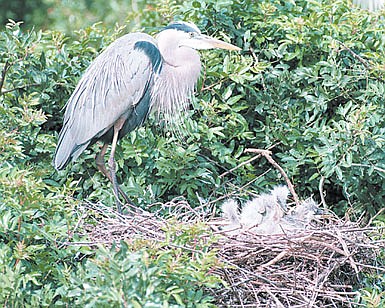May 13, 2004 at 9:39 a.m.
DNR Scientific and Natural Area Coordinator Bob Djupstrom told the County Press the Rush Lake island is one of the largest heron rookeries in the state. It’s got more than 500 active nesting sites.
The island is off-limits to humans from mid April to July 15 because human disturbance has a big impact on herons’ ability to nest and reproduce.
After July 15 it’s safe again for visitors to enjoy the untouched island.
The SNA is nursery habitat for great blue and black crown herons and egrets.
Djupstrom said the purpose of the SNA is to protect and preserve multiple examples of significant communities of species and rare plants, as well as places in Minnesota of significant geology.
The SNA sites have on-going research and educational uses. Sites are dispersed on purpose over a wide area, so not one single “catastrophic” event would hurt wildlife or plant species. Djupstrom said, for instance, one scientific site in Wisconsin was devastated when over 100 young birds died in the April hailstorms. If there had been several nesting sites preserved in that one area, losses would have been hard for the heron population to recover from.
If anyone has land they are interested in donating or for the state to consider for purchase-- contact the coordinator at 651-297-2357.
The SNA program now requires 40 acres or more, and there should be old growth forest, unique habitat or something special to preserve and study on the parcel.
Djupstrom said on May 8 the SNA program celebrated the addition of a site in Inver Grove Heights. Pine Bend Bluffs is 185 acres.





Comments:
Commenting has been disabled for this item.